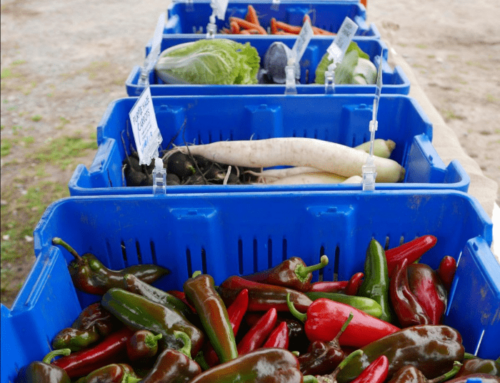By Richard Robinson, Farmer at Hopestill Farm
As the season winds down, I look forward to winding down with it, working shorter days and taking

Cutworms are moth larvae that live in the leaf litter.
longer lunches. But I know that any little project I can do in the cold months will save me precious time once the growing season starts up again. One such project I did last winter not only saved me time this past spring, but will continue to do so for as long as I garden. I made cutworm collars that will last as long as I live, and probably quite a bit longer.
Cutworms are moth larvae that live in the leaf litter. They feed on young stems, usually severing them completely. They are a heartbreaking pest, as they can destroy a good fraction of the tomato transplants (or most other seedlings) put out in early spring.
By the way, if you ever come out some morning and find a cut seedling, spend a minute searching the soil within a few inches of the plant. Chances are you’ll find the cutworm, sluggish from the evening meal.

Aluminum flashing is durable, long lasting material to use for your cutworm collars.
A cutworm collar prevents the larva from finding your seedling, and offers virtually complete protection. They can be made from all manner of materials, including cardboard tubes, plastic drinking cups, or folded index cards. All of these must be replaced pretty much every year, and when you plant hundreds of tomato seedlings, that can get old fast.

A triangular design allows the collars to fit easily over the seedling stem and can also be removed later on.
My alternative is to use aluminum flashing from the roofing section of the building store. Six inches is a good width, and there is no reason to get a heavy-duty weight—the lighter and cheaper, the better. An easy way to deal with the flashing is to place it in a five-gallon pail, which will keep it from unrolling as you work. I used a pair of metal snips to cut my flashing at 2 inches, giving me a strip 2”x6”. I folded the strip twice, to make a triangle.
The triangle fits easily over the seedling stem, making an impenetrable barrier. An added advantage of the open triangle is that once the danger has past—when the season has advanced and the stem has thickened—the collar can be easily removed. They go back into a bucket, ready for next spring.





